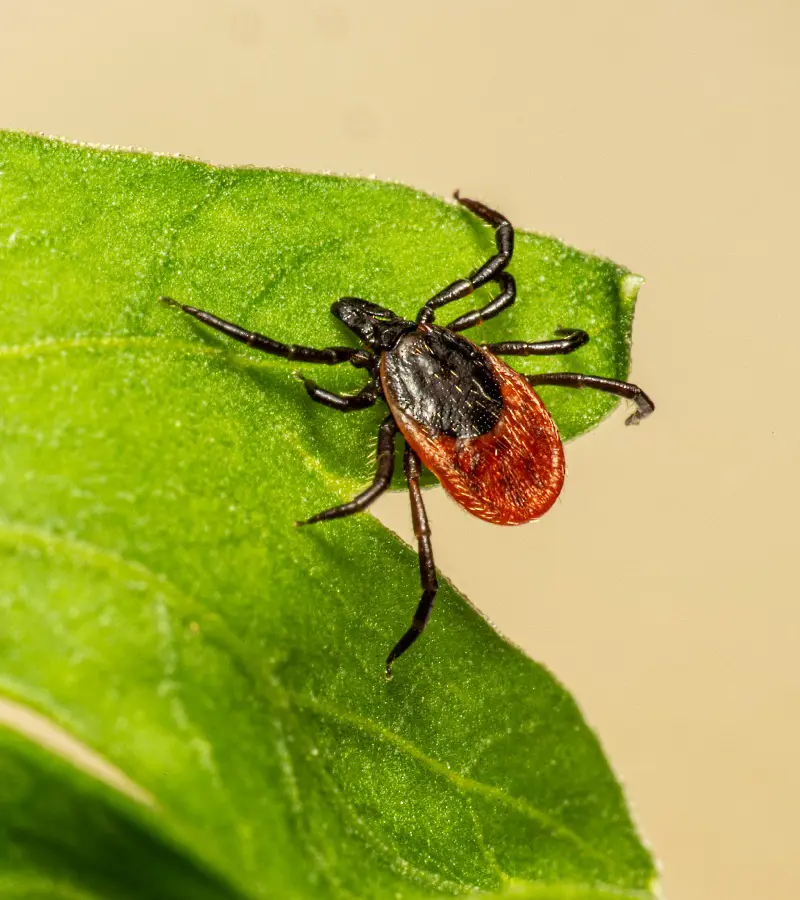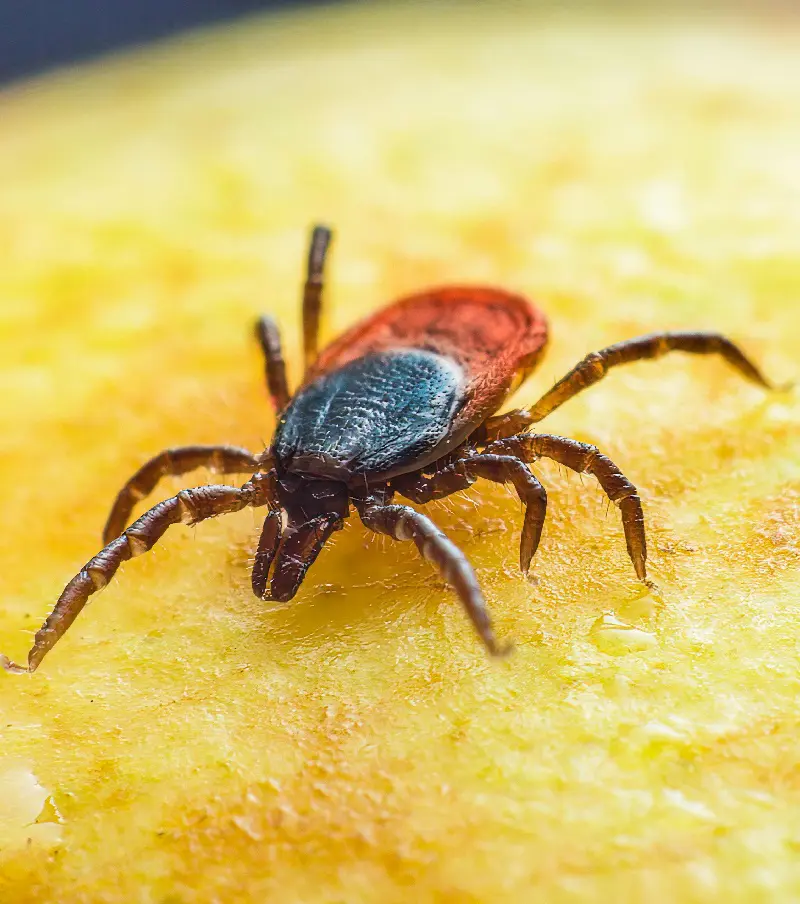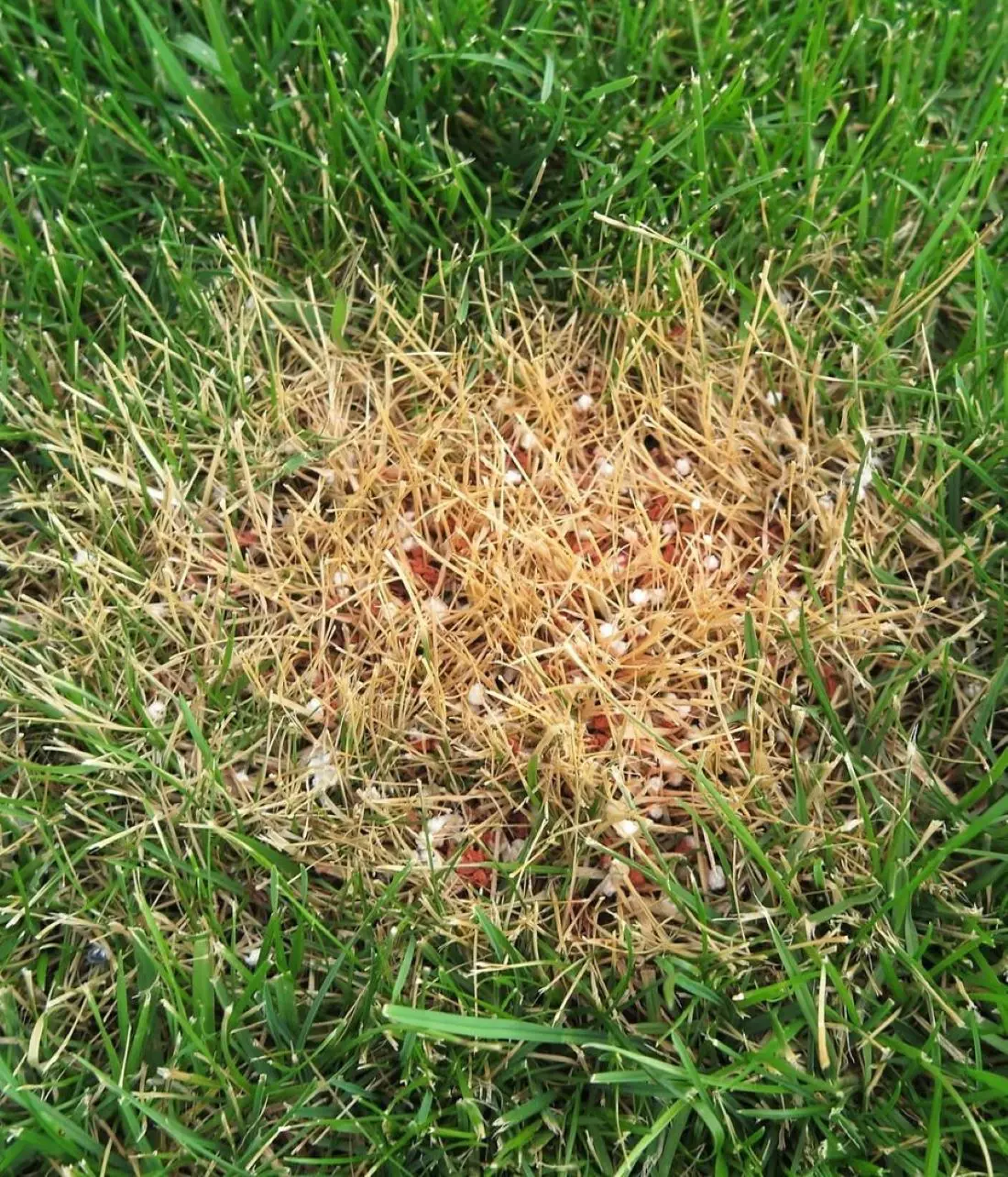
It's obvious that spending time outdoors raises your risk of getting an insect bite. Still, some insect bites are especially riskier than others so you should be properly acquainted with ticks and what do tick bites look like since they are especially common when going in woods and forests.
Since ticks carry a lot of diseases you should learn what do ticks look like on skin or if they are absent because you failed to catch them early, what does tick bites look like. We will cover these points and more such as how to reduce the risks of falling victim to tick-affiliated maladies in this guide.
How To Identify A Tick Bite?
Treating these bites is crucial in preventing various nasty tick-borne illnesses such as Lyme disease, Rocky Mountain spotted fever Anaplasmosis, Babesiosis, Southern Tick-Associated Rash Illness, etc. But before you can do so, you need to first know what do ticks bites look like.
Knowing how to identify a bite is crucial. Here is all the crucial information, signs, and symptoms that you will need to properly identify ticks or their tick bites marks:
1. Appearance

Just to make sure that you haven't confused bites of other parasites such as fleas or mites as tick bites, you should know what do ticks look like in skin. In fact, what are ticks? Ticks are parasitical small arachnids that are related to spiders, mites, and scorpions.
So, aside from their resemblance to tiny spiders, they are generally reddish, black, or dark brown and a tick lodged in your skin will often look like a small dark protrusion. When ticks engorge themselves on your blood, their size can vary as they often start off no larger than a sesame seed but will swell to the size of a coffee bean.
2. Presence
It’s always always to tell whether an insect bite is a tick bite or not even when knowing what do tick bite looks like as tick bites mimic symptoms of many other insect bites and diseases confusing even professional medical practitioners. Thus, they will often rely on laboratory tests just to be sure.
So your best bet at home for diagnosing tick bites is to find the ticks themselves, so look thoroughly. Without finding an actual tick attached and feeding on your body, it can be hard but not impossible to determine the origin of the bite.
3. Locations

Speaking of finding ticks on your body, unlike the painful bites of many other insects ticks often release painkillers such as votucalis into your body so you won't even be aware of being bitten. Thus although ticks can bite on any part of your body, knowing the common areas where they bite can expedite the tick-locating process.
Certain body part areas where ticks commonly like to move are the hairline, armpits, groin, and behind knees as ticks have a preference for warmer moist areas. Ticks can't fly so they jump onto your ankles if you're walking or into your hips and waist if you're sitting.
4. Difficult To Dislodge
Ok, so you found an insect biting on you, but is it really a tick? It could just as easily be a chigger or a mite even if it is an arachnid, learn what does a tick look like in the skin so you won't confuse them for other insects. First, aside from looking brown, red, or black just like mites and chiggers, ticks are designed to linger on the bites.
They do this by having a bunch of backward-pointing barbs in their mouth that they use to stay put which isn't present on the likes of chiggers. Aside from that, they also secrete a cement-like substance to keep them stuck even if they were scratched at so yeah, if it's hard to remove it's probably a tick.
5. Allergic Reaction

Depending on whether the tick is a baby or an adult, it can stick around anywhere from 3 to 6 days with greater risks of transmitting disease the bigger they are. However, if you're unlucky to find a bite site with no insects then you have no choice but to rely on the allergic symptoms.
Unless you have been previously bitten by a tick, it is highly unlikely for you to develop an allergic symptom to tick saliva so it will only cause minor symptoms such as a small red dot spot that doesn't appear larger than a dime. But if you do develop an allergy it is followed by swelling and rashes which will be better detailed below.
6. Swelling
So if you’ve been previously bitten by a tick, you can develop hypersensitivity to tick bites which will give you an allergic reaction within 20-40 hours of the bite. When the histamines and white blood cells, start fighting the tick saliva recognized as a foreign substance, it causes them to accumulate under the bite mark.
This results in your skin getting inflamed, swollen, and puffy near the bite mark in a short period with a distinctive telltale sign of a tiny deep red circle followed by a lighter red patch around the edges or a dark spot that looks like a bruise. This isn't always present depending on the species of ticks but it wouldn't be present on a mosquito bite.
Other Insect Bites
Tick bites can mimic a lot of symptoms so there's a risk of misidentifying bites, however, you can reduce the risk of misdiagnosis by knowing the symptoms of other insect bites. Mosquitoes tend to bite more than once or in groups so if there are multiple bites, it's a mosquito whereas ticks work alone and generally result in a single lesion.
If you have been bitten by a spider most of the spider bites have a certain look such as leaving two equally spaced dots which is more distinct and turn the skin red, brown, violet, or black depending on the species. However, statistically, you are more likely to be bitten by a mosquito or a tick than a spider.
7. Itchy

Well, even if an allergic reaction doesn't occur which results in both lack of swelling and rashes as tick saliva rarely elicits a histamine response the first time, you should still be able to feel them biting right? No, tick bites do not hurt as they contain a pain mediator within their saliva.
However, one thing that is noted for sure is that most people find tick bites itchy even if they don't know they have been bitten, thus if you develop an itch suddenly at a certain spot on your body, make sure to see what you're scratching at. More often than not, you will be able to find a newly lodged tick still attached to your body.
8. Rash
You’ve probably heard of the classic "bullseye” rash that shows up after being bitten by a tick, however, it is merely a symptom of Lyme disease and not of the bite itself. Depending on your location and tick species, most tick bites only have a 2% chance of propagating the disease and even then the rash only appears about 70% of the time.
Instead, you should also be looking out for rashes less than 2 inches, crusty spots with a splotch of redness, bluish rashes, a red oval plaque, or a red speckled rash on wrists and ankles which is caused by rocky mountain spotted fever caused by a tick.
How To Remove Ticks? Step-By-Step Instruction
Ok, so now that you have probably found a tick lodged into your skin, the very first thing you need to know and do is to not panic. If the tick is still attached then it's probably the first 36 hours so you have a very low chance of contracting Lyme disease but if you mess up the extraction process, you exacerbate those chances.
Grab a set of fine-tipped tweezers and follow the instructions below to properly and thoroughly remove the ticks in your skin:

- First, clean the tweezers with a disinfectant or an alcohol rubbing solution and let it dry.
- Move the tweezers as close as possible to your skin's surface and grab the tick's head or as much of the tick as possible.
- Make sure to pull upwards with a steady even pressure, try not to rip it off as we want the tick intact. Gently keep applying more and more pressure as needed to get the tick to release its mouth barbs and grip the skin.
- Avoid twisting or crushing the tick as it will result in their head breaking off in the skin which makes it harder to remove as well as their blood getting into your wound which increases the risk of infection.
- Once the tick is removed, check if its head is still lodged. If it is, don't panic, first, check whether the legs of the tick are moving. If it is then the parts that are still stuck are just mouth barbs which can't increase the risks of getting Lyme.
- However, if the tick had been dismembered, use the same technique as before to try to remove the embedded head. However, if you can't get it out, avoid making the injury worse. Most of the time, the skin will heal automatically and head gets pushed out within 1-2 weeks.
- Take a picture of the tick so you can help your doctor figure out the type of tick and figure out transmission chances of various potential diseases if it comes to that.
- Lastly, get rid of the tick properly especially if it is still alive. You can either flush them down the toilet, dispose of them in a sealed bag, or by wrapping them tightly in adhesive tape.
Avoid:
- Do not try to remove ticks with your fingers, this will never get the complete tick out.
- Do not opt for crushing the tick over removing them.
- Do not use petroleum jelly, nail polish, rubbing alcohol, hydrogen peroxide, or a hot match to kill the tick while they are in your skin.
- These methods either do not work, take too long, or increase your risk of disease infection. Leaving ticks in your skin longer increases your risk of contracting Lyme's.
What To Do If You Are Bitten By Ticks?
Once you have removed the ticks or perhaps there were no ticks to be found but you still suspect a tick bite due to allergic symptoms that look similar to a non-Lyme tick bite then here are several things that you can do to combat the possibility of you contracting contracting Lyme disease.
We will cover only home remedies so most of the materials you require are often already likely to be available in your household and are considered to be effective by professionals so you don't have to visit a local hospital or clinic:
1. Wash The Bite Site
This is basic advice but it works for plenty of insect bites and tick bites are no exception either. Wash the affected area of your skin with soap and warm water with as much lather as you can to prevent the risk of infection.
Aside from warm water and soup, you can also an iodine scrub to improve the efficacy of your disinfecting measures if you have them lying around.
2. Pat With Rubbing Alcohol

Soap can only do so much disinfecting, most healthcare advisors also recommend cleaning your bitten area with rubbing alcohol to disinfect the skin thoroughly. Make sure to do this just after cleaning with soap as just one or the other isn't sufficient.
Pour some rubbing alcohol on a cotton ball then gently pat the relevant skin to disinfect the area to avoid searing pain. This is relevant for one other reason, a high concentration of rubbing alcohol may disinfect the wound better but it will also cause scarring which will prevent your wound from healing quickly.
3. Apply Over-The-Counter Ointiment
You can also apply an over-the-counter antibiotic ointment solution such as Polysporin or Neosporin, especially if the bite ends up becoming inflamed or crusting as it will further help lower the risk of infection while tamping down on current lingering inflammation.
Unlike rubbing alcohol they also have no risk of causing scars, however, if you don't have them available then there's no need to go out of your way to get them. We have plenty of other alternatives to these ointments below so simply choose the solution that you already have.
4. Pour Aloe Vera

Aloe vera has anti-inflammatory and analgesic agents so they can also be used to reduce the swelling and pain in the affected regions caused by tick bites. Furthermore, it soothes the skin gel and promotes the healing of the wound.
You can apply aloe vera gel over the wound directly or crush it to make a paste and leave it over the affected area for about 10-15 minutes. Then rinse thoroughly with lukewarm water and repeat as needed twice a day.
5. Use Calendula Lotion
Aside from applying aloe vera to relieve swelling and rashes, sometimes the tick bites can become unbearably itchy. Although aloe vera can soothe the itchiness to some extent, if it is uncomfortably severe then we highly recommend using a specialized solution that is calendula lotion.
Calendula lotion hydrates the skin while its anti-inflammatory and anti-oxidant properties greatly help provide a specialized answer to the itch caused by tick saliva in the affected area. Removing the urge to scratch is especially necessary to prevent opening the sensitized skin as it opens you to third-party wound infection.
6. Pour Essential Oils

According to a 2018 study from Johns Hopkins University in Baltimore, out of 35 tested highly active anti-bacterial essential oils 10 of them were shown to be capable of killing the latent forms of Lyme disease-causing Borrelia burgdorferi bacteria.
The oils were derived from garlic, myrrh, thyme, cinnamon, allspice, cumin, spiked ginger lily, may chang, amyris, and eucalyptus. Although effective, they need to be diluted with a neutral carrier oil such as olive, coconut, or almond oil. Always do a patch test to ensure that your skin doesn't get sensitized before applying.
7. Draw Out Toxins
You can draw out the tick saliva toxins to preemptively lessen the chance of the allergic reaction from worsening if you make and use a poultice of either bentonite clay, charcoal, or manuka honey.
Add the clay or charcoal to a small bowl while adding water slowly until you get a peanut butter-like consistency, add essential oils if desired, and apply the poultice to the affected area. Manuka honey can be applied directly but make sure to cover your poultice with cloth or bandage to prolong the drying process.
8. Take Vitamins

Certain vitamins have been noted to boost your immune system which can also aid in defeating various disease-causing microbes carried by ticks whilst extraditing the healing process.
Some vitamins that are recommended are Vitamin C which is known for its immune-boosting properties and Vitamin E which is noted for helping repair damaged skin and reduce scarring. You don't have to take supplements as citrus fruits are rich in Vitamin C while vitamin E can be supplemented with tuna, spinach, avocado and eggs.
9. Apply Olive Leaf Extract
Aside from taking vitamins, one could also apply olive leaf extract which has been stated to be rich in antimicrobial compounds that help fight bacteria and viruses, reduce the risk of skin infection, and have natural anti-inflammatory properties for treating tick bites.
As stated previously, if you don't have access to it, you don't have to go out of your way to get it as we are listing several materials as an alternative in case the previous suggestion is merely unavailable in your household. Olive leaf extract can either be applied topically or through oral supplementation as directed on the product label.
10. Take Astragalus Tea

Take astragalus tea to help the body fight bacterial and viral infection of the bite wounds to reduce the risk of developing any tick-borne diseases. You could either make tea by steeping a tea bag of dried astragalus infection or by boiling astragalus roots directly into a tea by releasing its active compounds.
Alternatively, astragalus can also be found as a capsule and a liquid extract should that be more convenient for you. Make sure to not take more than a cup of astragalus tea per day and avoid it for children, if you have organ transplants, or are pregnant.
How To Prevent Tick Bites?

The best way to prevent tick bites is to get familiar with how a tick looks and check yourself routinely as well as remove tick from dog and other pets while on a nature hike. Avoid heavily wooded areas with long grass, spray DEET repellents on your clothes, and opt for light-colored clothing to help see ticks better.
Last but not least, you can get ticks from your own garden so make sure to get rid of ticks in your yard by doing some regular pruning and lawn mowing to remove any debris that the ticks might use to hide and jump onto you.
When To Go And See A Doctor?

Continue keeping tabs on the area bit by a tick even after applying the above-mentioned remedies. If the bitten area becomes red or swollen for days along with the development of new flu-like symptoms then this may be related to any of the tick-related diseases such as Lyme, STARI, Rock Mountain fever, etc.
In this case, you should immediately call your doctor or visit the nearest emergency room along with the picture of the tick that you took. All of these diseases can easily be treated by your healthcare practitioner.










